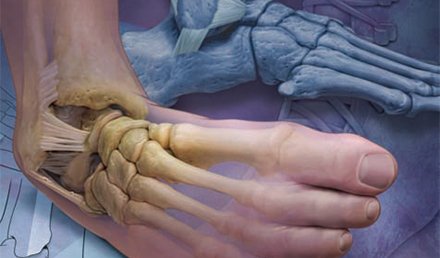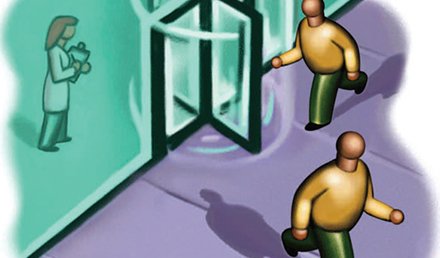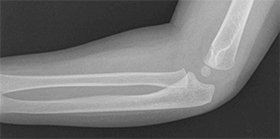

Toward a Happier World: The Art of Patient Service
JOHN SHUFELDT, MD, JD, MBA, FACEP Customer service is a trendy theme in virtually every business these days. However, the gap between “woulda, shoulda, coulda” and reality is invariably significant. Simply put, the concept of customer service is given universal lip service, but it is rarely incorporated into the fabric of an urgent care clinic. An effective patient service program requires five core elements: planning, training, execution, evaluation, and reward/recognition.
Read MoreBankruptcy: When BK Doesn’t Mean You Can Have It Your Way
JOHN SHUFELDT, MD, JD, MBA, FACEP My favorite movie—other than Wedding Crashers, of course—is It’s a Wonderful Life. I watch it every Christmas. One of the most memorable scenes is where Uncle Billy misplaces the envelope containing the deposits. Once George realizes the gravity of the situation, he confronts Uncle Billy: “Where’s that money, you stupid old fool? Where’s that money? Do you realize what this means? It means bankruptcy and scandal and prison, that’s …
Read More
The Case of a 24-Year-Old Man with Abdominal Pain
Our goal with the Bouncebacks series is to maximize patient safety and minimize the urgent care provider’s medico-legal exposure. As Greg Henry wrote in the forward of our Bouncebacks! book, “The smart doctor is not the one who learns from his own mistakes. The smart doctor is the one who learns from the mistakes of others.” Our case this month involves a young man with vomiting and diarrhea and abdominal pain. This typical urgent care …
Read More
Acute Ankle Injuries in the Urgent Care Setting
Urgent message: Working knowledge of anatomy and familiarity with radiograph reading, injury classification, treatment options, and criteria for referral support positive long-term outcomes in patients with acute ankle injuries. Janet D. Little, MD and William E. Saar, DO Acute ankle injury is one of the most common musculoskeletal injuries in the athlete and sedentary person alike. The yearly incidence of ankle injuries varies between resources, but ranges from 1 million to 5 million per year …
Read MoreFighting the Urge to Judge
Lee A. Resnick, MD, FAAFP In a previous column, entitled “Rekindling the Doctor-Patient Relationship”, I focused on methods for developing trust with your patients. The intention of building trust is to enhance patient relationships and ensure positive patient encounters. Judgments can be a significant obstacle to that process, however. In fact, judgments are the surest way to undermine trust, and can potentially lead to delay of appropriate care or to misdiagnosis. Judgments are second only …
Read MoreAbstracts in Urgent Care: July/August, 2008
It’s not Easy for ED Patients to Get Follow-Up Care Key point: Only 23% of attempts to schedule an outpatient follow-up appointment were successful in this study of callers posing as ED patients without primary care physicians. Citation: Vieth TL, Rhodes KV. Nonprice barriers to ambulatory care after an emergency department visit. Ann Emerg Med. 2008;51(5):607-613. Almost half of emergency department patients are dis- charged with instructions to follow up with an outpatient clinic or …
Read More
Patient with recurring sharp pain in left eye
The patient is a man who presents to the urgent care center after waking in the morning with a sharp pain and a feeling of \”something grainy\” in his left eye. Upon examination, you find diffuse redness of the sclera and conjunctiva, as well as tearing. Additionally, the patient appears photophobic. You are unable to assess visual acuity because he has left his contact lenses out and does not have glasses. Fluorescein examination reveals no …
Read More
2 1/2-year old has swollen elbow after falling
The patient is a 2½ -year-old female who presented after falling, unobserved, from an unknown height with tenderness and swelling around the elbow. Neurovascular exam was normal. View the image taken and consider what your diagnosis would be.
Read MoreDeveloping Data: June, 2008
As an emerging distinct practice environment, urgent care is in the early stages of building a data set specific to its norms and practices. In Developing Data, JUCM will offer results not only from UCA’s annual benchmarking surveys, but also from research conducted elsewhere to present an expansive view of the healthcare marketplace in which urgent care seeks to strengthen its presence. In this issue: What three commonly prescribed medications are believed responsible for one …
Read More